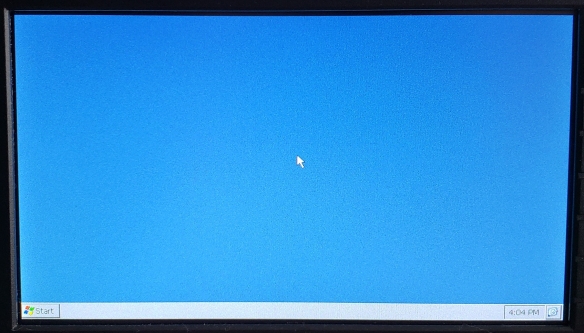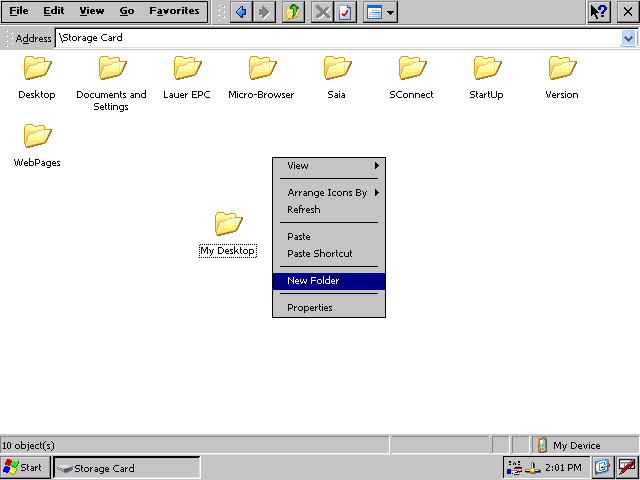It’s not that I didn’t know this for such a long time, but today I’ve just realized that there are so many questions regarding automatic application launching.
Cedesktop.exe Wince 6.0 Wahai Kau Cinta Free Download Indian Polity By Subhash Kashyap Pdf Train Simulator 2015 Crack Fix Start Launch Sharepoint Preparation Tool Les Choristes English Subtitles Megavideo Download Anime Ai Yori Aoshi Sub Indo 3gp Malayalam Serial Actress Saree Navel Photos.
- Cedesktop Exe free download - Exe to Msi Converter Free, FardaSaz EXE to SWF, Microsoft.NET Framework 4, and many more programs.
- Windows CE 6.0 Embedded - RecensioneMusiche: Mario Fabiani (e montaggio: Daniele CantoniLeggi l'articolo su https://www.daniele.
- Cedesktop.exe Wince 6.0 DownloadCedesktop Exe Wince 6 0 Download FullCedesktop Exe Wince 6 0 Downloa.
So, leaving the startup process aside, once WinCE has loaded, the system loads all the applications specified in the HKLMInit registry key, with the values of LaunchXX. The XX stand for a integer value between 00 and 99 (this means that 1 should be coded as 01). The XX values actually represent the sequence that applications are launched (so 00 will be launched first, 01 second etc.). It is good to keep in mind that the system will not wait for an application to ‘fully’ start. This means that it will generate an interruption for each and every application in the Init key, in a specified sequence, without creating a delay or a timeout between any two consecutive applications in the sequence. This is good since it means that application launching cannot create any kind of system hangs (at least in theory).
However, it is sometimes necessary to create a dependency between applications (application MyShell.exe cannot start – in the developer’s point of view – without running Shell.exe, since, for example, it is using some variables generated by Shell.exe). Therefore, a DependXX value can be used, where XX should match the value in the LaunchXX key where the dependecy is specified.
LaunchXX contains a value of the REG_SZ type which must be the name of the program that needs to be launched, such as MyShell.exe, without the parameters. Again, the XX value determines the load order.
DependXX contains a value of the REG_BINARY type, which enables you to determine the dependency of applications on other applications during the load by specifying which applications must be loaded prior to the application specified in the corresponding LaunchXX key. The indexes of XX applications that a given application is dependent on are specified as a lists of words with a reverse byte order. It is important to keep in mind that a word is (as usual) 2 bytes long.
The application specified in the Init registry key must inform the system that it has loaded successfully and the dependent applications can be loaded by calling the SignalStarted() function with a parameter that it is passed to by the system as a command line parameter
during the load.
An example of the Init registry key is shown below:
[HKEY_LOCAL_MACHINEInit]
“Launch10”=“shell.exe”
“Launch20”=“device.dll”
“Depend20”=“hex:0a,00”
“Launch30”=“gwes.dll”
“Depend30”=“hex:14,00”
“Launch50”=“MyShell.exe”
“Depend50”=“hex:14,00, 1e,00”
In this case, the shell.exe application launches first, then it loads the Device Manager (device.dll), which depends (in the example) on shell.exe, then it loads gwes.dll, which is dependent on the Device Manager, and finally, MyShell.exe, which depends on both the Device Manager (device.dll) and gwes.dll.
Normally, setting up the startup options is something you would do on OS image building. However, in case you can’t do this before building the image, and considering you are using a Hive-based registry, it is ok if you use a Registry Editor or a Remote Regustry Editor (like the one over KITL) and update the registry ‘manually’.
Word of advice: always be sure to double-check the launch sequence! It is possible that certain BSP features or drivers are already in the sequence and required by the your OEM. Using the same XX value twice in a sequence may cause system crash or system ‘hang’. In case you want to auto-launch only one application (your main application for the system), it is probably best to assign it the 99 value (in case it’s free :-)).
That should be it for now! Comments are very welcome!
Alex

This is a tutorial for running Navit on a machine with Windows Core Embedded Systems and Mobile. If you want to build Navit on your machine please follow the instruction on the pageWinCE_development.
| Version | Support |
|---|---|
| Windows CE 4.0 | ? |
| Windows CE 4.1 | ? |
| Windows CE 4.2 | ✓ |
| Windows CE 5.0 | ✓ |
| Windows CE 6.0 | ✓ |
| Windows Mobile 2002 | ? |
| Windows Mobile 2003 | ? |
| Windows Mobile 5.0 | ? |
| Windows Mobile 6 | ? |
| Windows Mobile 6.1 | ? |
| Windows Mobile 6.5 | ? |
- 3Installation of Navit
- 3.3Editing navit.xml
- 4Running Navit
Make sure your device is compatible[edit]
First, you will have to make sure that your device is compatible, that is to say, to make sure you can install arbitrary cab files or run arbitrary exe files on it.For some devices, there are unlock procedures (Mio C310 and C210) that will allow to escape from the main program and get a Windows CE desktop.
Download cab or zip Navit package[edit]
Download the latest release from http://download.navit-project.org/ and go to the WinCE section. From there get the CAB or ZIP navit package and put it on your device (see below). You may use the latest shipped XML file for you to configure (or for devices with low memory output use the file from http://ix.io/18Jb).

Installation of Navit[edit]
SD Card or MicroSD Card[edit]
- Copy the cab-file onto a SD card. Insert it in your mobile device. Start the cab-file for installation or (if applicable) use a CAB-Install application.
OR
- Unpack the zip-file onto a navit folder to save on a SD card. Insert it in your mobile device. Navigate to the folder navit (probably located in Storage Card. Start navit.exe.
Direct Download[edit]
If you mobile device with WinCE/WinMobile is directly connected to the internet. Download the cab file and install it.

Editing navit.xml[edit]
For configuration with the navit.xml file it it useful to transfer the file navit.xml to your Desktop-Computer (ActiveSync on Win.. or with SynCE on Linux). Edit the XML-file navit.xml using Notepad++ or another editor and store it back on your mobile device.
GPS Receiver[edit]
Cedesktop.exe Wince 6.0 Crack
GPS Receiver communicates with the Operating System OS via COM1, COM2, ... normally. You have to set the COM-interface with the XML-tag in navit.xml.For example for a bluetooth receiver connected via (virtual) com port com6 working at baudrate 38400, update you navit.xml files for GPS settings (<vehicle> tag):
Note the colon: after COM6. Without it, you'll probably see lots of 'vehicle_wince:initDevice:Waiting to connect to com<n>' in the log file.
Note: you will probably have to comment out, or set to disabled all other <vehicle> entries to keep only this one.
If you have an internal GPS or Bluetooth receiver, then you will have to determine the com port of the GPS.
There are several ways to do this:
- On some devices, for internal GPS receiver, go to Settings > Connections > GPS. (Sometimes this item is hidden, but you can run the program WMGpsShow to unhide it). Tap Hardware and you can see the 'GPS hardware port' and 'Baud rate'.
- You can also run the Windows CE utility SirfTech.exe on your device to scan the GPS, it will give you both the com port and baud rate for the GPS receiver.
- For a bluetooth-connected GPS, the virtual com port can be configured and / or reviewed in Bluetooth Settings on tab Serial port as value of input box Outbound COM port.
- If the above does not help, for internal GPS receiver, have a look at registryHKLMDriversBuiltInGPSserialFriendlyName to determine your GPS-COM-Port.
Once you know the GPS hardware COM port and baud rate, let's say port COM7 and baud rate 57600, then you have to set these values in navit.xml using a line similar to:
On some device, it is necessary to use uppercase letters for the COM port (eg: 'COM5') to get it work (added by Killerhippy, hope it helps)
Using Navigation Next Turn OSD item[edit]
To use the navigation_next_turn OSD item on WinCE, the icon must be explicitely sourced. In navit.xml it should something like:
See http://trac.navit-project.org/ticket/498 for more information.
Speech[edit]
Speech output should work out of the box on WinCE.In navit.xml which comes with the WinCE Navit-build you can find:
All files are included and no additional installation/configuration (and no espeak.exe) is necessary!
Language[edit]
Language detection may not work on WinCE devices, so you may have to manually configure your language by manually setting it in navit.xml. Here is an example for Austrian German:
Download a Map from OpenStreetmap[edit]
Use Navit pre-processed OSM maps. With your browser on desktop:
- Navigate to the region you want,
- mark a rectangle for your map (e.g. for Germany) and click select for the chosen rectanglular map.
- then click on download and save the file to country.bin (e.g. germany.bin) on your desktop computer.
- copy the file to on your WinCE/WinMobile device via ActiveSync or SynCE on Linux (or an option that may be faster because of the size of the maps, you can also directly copy the map to the (Micro-)SD card from your PC and re-insert the card in your mobile device later). Create a maps directory for the maps on your SD card and copy the map files to that folder (the examples below assume that the maps will be stored in StorageCardmaps, and that the map will be saved as StorageCardmapsgermany.bin.
Note that the separator between directories is on Win-OS the ' and Linux, Mac, ... '/'.

- This directory will be used in navit.xml so that navit is able to find and use the map(s):
- Add and enable the map for the application in navit by changing the lines (at approx line number 370)
It seems you need to specify the bin name in newer versions of navit. I also had to add two backslashes before the bin name running 0.2.0, or the log would tell me it couldn't find the map file. This is most likely a bug...
Disable unused mapset sections by setting enabled to no, e.g. the pre-installed sample maps at line 370 in navit.xml.
Cedesktop.exe Wince 6.0
- You may want to customize the initial location displayed on the map. Example below for 4123 N 1234 E (this string means 41.23 North and 12.34 East):
Running Navit[edit]
Memory Issues[edit]
If you have a WinCe device with only 64 MB RAM you may encounter problems if you try to route to far destinations.Perhaps you can fix this in WinCe under 'Einstellungen/System/Arbeitsspeicher/' and move the slider to the left to increase your program memory (and decrease your data memory) assignment.Perhaps you will try about 50000 KB or above for program memory assignment. This may not fix all crashes but should stop those immediate crashes after you have selected your destination.Also, using a specific navit.xml configuration file like http://ix.io/18Jb might help (see the reference above).
Vehicle settings for various devices[edit]
| Device | Vehicle tag |
|---|---|
| Yakumo Delta 300 GPS WM2003 v4.20 | <vehicle name='Local GPS' profilename='car' follow='1' enabled='yes' active='1' source='wince:COM2:' baudrate='4800'> |
| Navigon 70/71 Easy | <vehicle name='Local GPS' profilename='car' follow='1' enabled='yes' active='1' source='wince:COM2:' baudrate='4800'> |
| DigiWalker Mio C210 | <vehicle name='Local GPS' profilename='car' follow='1' enabled='yes' active='1' source='wince:COM2:' baudrate='4800'> |
| Sony Nav-u | <vehicle name='Local GPS' profilename='car' follow='1' enabled='yes' active='1' source='wince:COM5:' baudrate='4800'> |